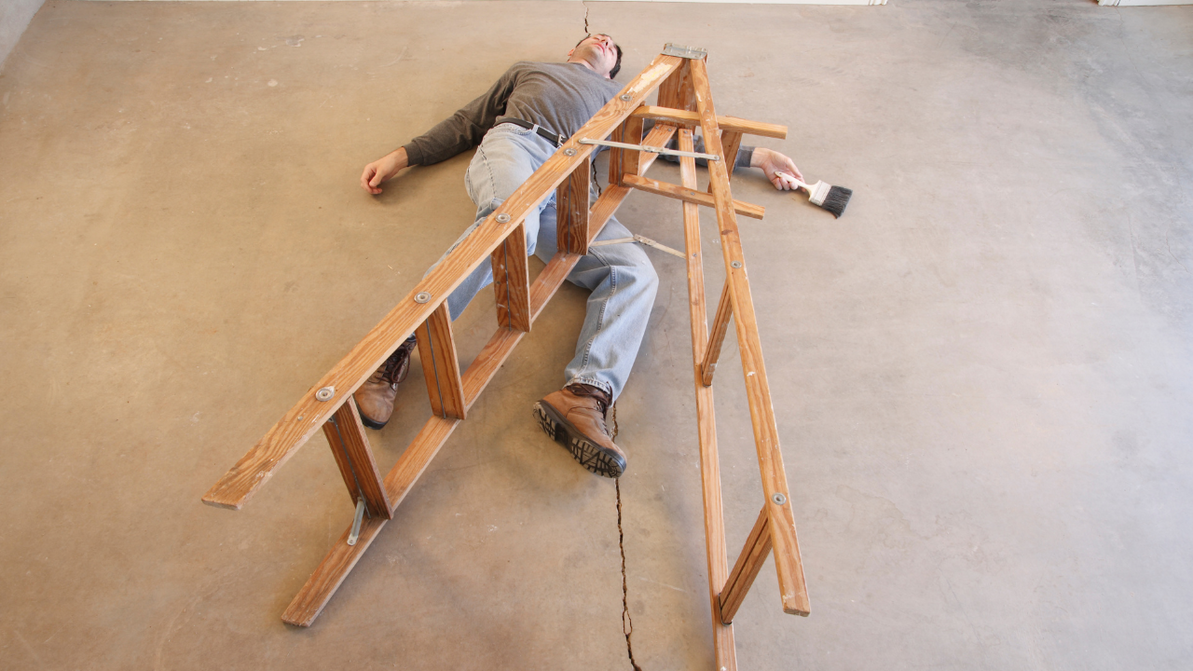10 Ladder Safety Tips for DIYers and Professionals
Whether you're a weekend DIY warrior or a seasoned professional, using a ladder can be one of the most common (and risky!) tasks. With a focus on safety, here are ten ladder safety tips to keep you on solid ground—both literally and figuratively.
1. Choose the Right Ladder for the Job
Not all ladders are created equal. From step ladders to extension ladders, each has a specific purpose. Make sure the ladder height is suitable for your task, and never stand on the top rung of any ladder. For professionals, using an industrial-grade ladder might be necessary to handle heavier weights, while DIYers might only need a simple step ladder.
Tip: Check the duty rating of your ladder to ensure it can support the weight of both you and any tools you’re carrying.
2. Inspect Your Ladder Before Each Use
Before you step onto a ladder, give it a thorough inspection. Look for cracks, loose parts, or any signs of wear and tear that could compromise its stability. For professionals who use ladders daily, frequent inspections can mean the difference between a safe day’s work and a costly accident.
Tip: Pay special attention to ladder feet, locking mechanisms, and steps for any potential signs of wear.
3. Set Up on Solid, Level Ground
One of the most common mistakes is setting up a ladder on uneven ground. Make sure to place it on a solid, level surface, avoiding soft or uneven terrain. If you’re working on soft ground, consider using a ladder stabilizer or place it on a board to ensure even weight distribution.
Tip: Avoid slippery surfaces or using a ladder on wet ground. For extension ladders, make sure they’re leaning at the correct angle: roughly 75 degrees or a 4:1 ratio.
4. Follow the "Three-Point Contact" Rule
To keep your balance, always maintain three points of contact with the ladder: two hands and one foot or two feet and one hand. This rule helps stabilize your body and minimizes the risk of falls, especially when working at heights.
Tip: Never lean or reach too far away from the ladder. Move it as needed instead of overextending.
5. Use the Right Angle for Stability
For extension ladders, setting the ladder at the correct angle is essential. Place the base of the ladder one foot away from the wall for every four feet of height. For example, if you’re climbing 20 feet, place the base of the ladder five feet from the wall. This angle keeps the ladder stable and reduces the risk of tipping.
Tip: Use a quick visual check by placing your toes at the base and stretching your arms out; if you can just reach the ladder, it’s at the right angle.
6. Avoid the Top Rungs
The top rungs of a ladder are not designed for standing. For extension ladders, avoid the top three rungs, and for step ladders, stay off the top two steps. Using the top rungs can throw off your balance and increase the risk of falls.
Tip: If you need extra height, consider using a taller ladder rather than pushing the limits of a smaller one.
7. Don’t Overload the Ladder
Each ladder has a weight limit, known as its duty rating, which includes both the user and any tools or materials. For professionals, this means selecting a ladder that’s appropriate for the workload and considering heavy-duty options for demanding tasks.
Tip: Look for ladders rated Type I or Type IA for heavy-duty tasks.
8. Beware of Power Lines
When working outdoors, always be mindful of overhead power lines, especially when using metal ladders. Electricity can arc to a ladder that’s too close, even if it doesn’t touch it directly. Keep at least a 10-foot distance from power lines to avoid accidental electrocution.
Tip: Use fiberglass ladders when working near electricity, as they’re non-conductive and safer.
9. Secure the Ladder
If you’re working on an uneven surface, windy day, or particularly tall ladder, securing it is essential. Use ladder stabilizers, hooks, or even tie the top of the ladder to a secure structure. This is particularly helpful when using extension ladders on slick or hard-to-secure surfaces.
Tip: If you’re working solo, consider sandbags or weights to secure the base of the ladder.
10. Have a Helper When Possible
A helper can steady the ladder, pass up tools, and keep an eye out for any potential safety risks. While DIYers might often work solo, having an extra set of hands around is a smart move for safer, smoother ladder use. For professionals, team setups can help minimize risk.
Tip: Communication is key. If you have a helper, establish clear signals or instructions before beginning work.
Final Words: Safety First, Every Time
Taking a few extra minutes to follow these ladder safety tips can save you from painful injuries, costly delays, or worse. Remember, whether it’s a quick home repair or a full-day professional job, ladder safety is never something to overlook.
Recent Posts
-
Why Scaffolding Continues to Rank Among OSHA’s Top Violations
Scaffolding has consistently landed on OSHA’s Top 10 Most Frequently Cited Violations list for at le …Dec 23rd 2025 -
Scaffolding Rental vs. Turnkey Scaffolding Services: What Contractors Should Know Before Deciding
When you’re planning a project that requires scaffolding, one of the first decisions you’ll face is …Dec 19th 2025 -
Why Hiring a Professional Scaffolding Company Matters
Scaffolding is one of those things that people often underestimate—until something goes wrong. On pa …Dec 17th 2025




